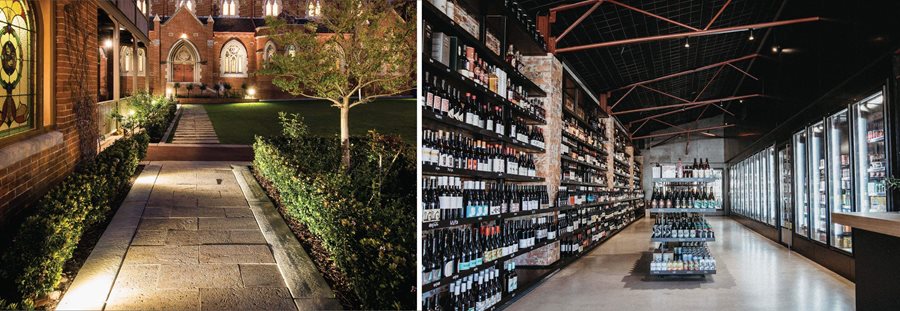Architectural Lighting Design
By RLAdmin | 30 Jun 2020 | 0 Comments
Architectural Lighting is the junction of Art and Technology (ie Architecture and Light) and is the medium that allows us to see and appreciate the beauty in buildings around us, while also fulfilling the practical and functional needs as well. It is easy to confuse what actually constitutes architectural lighting and what makes it different to other types of lighting, but the rule is the same no matter what the project; designing light according to the way in which the space will be used. Or put simply, to enhance the experience of the building or space that is being designed.
Without light, architecture would have nowhere near the same impact it has now, light draws attention to textures, colours and features of all kinds of spaces; helping further the design of every physical and atmospheric aspect. The difference between this and other types of lighting, is that Architectural Lighting serves to enhance architecture, without stealing the limelight. Where decorative lighting is a statement in itself, architectural lighting works in collaboration with the building, so that they complement each other.
Architectural Lighting Design focuses on three main factors, Aesthetic, Function & Efficiency.
Aesthetic:
The aesthetic appeal of any project is the emotional impact that it will have on those occupying the space, this is especially important in the Retail and Commercial sectors. Carefully planned Architectural Lighting not only draws a customer inside a retail store but also helps guide orientation throughout the interior, to specific product displays and ideally to the cash register to complete a sale. Office buildings also use Architectural Lighting to highlight and represent their brand image and keep it front of mind for their clients.

Function:
Light fixtures need to produce a sufficient amount of light for the purpose of the structure that they are a part of. This will change from project to project, such as task lighting for reading or working, directional light to guide you safely down a path or upstairs or emergency lighting for safe exit out of a building. Whatever the space, lighting needs to improve ones’ ability to live and work, so the functional aspect of Architectural Lighting is crucial.

Energy Efficiency:
Which is ensuring that light is economically used and distributed. Designing a lighting plan that has maximum impact, with minimum energy consumption can be tricky, but can be achieved with these tips:
- Installing LED’s instead of halogen or fluorescent bulbs, which not only saves power but also saves you money on your power bill.
- Using task lighting such as table lamps or floor lamps instead of ceiling lights, this ensures that you only light up the specific area you need, instead of an entire room.
.jpg.aspx?lang=en-AU&width=1000&height=346)
There are a number of other factors that come into play when planning architectural light, such as Correlated Colour Temperature (CCT), Colour Rendering Index (CRI), Colour Stability and so on, for a more in depth look at the importance of the Quality of Light, click here.
Whilst this all sounds like a lot to get your head around, this is where we come in; here at Radiant Lighting we have specialised lighting simulation software to help bring your design plan to life. Using a program called Dialux, we can plan and create a lighting design before even stepping into the building itself. It enables our Lighting Designers to see if your initial plan was successful in producing the right amount of light in the correct way, and if not, it can be altered and changed to make sure that the end product is exactly what you had in mind.
Here at Radiant Lighting we have an unparalleled product range of architectural luminaires and we continue to supply them to a range of sectors, such as large-scale supermarkets, commercial office fit outs and hospitality projects. We know how important lighting is and how much it can impact a project; we can confidently provide aesthetically pleasing lighting solutions that are not only energy conscious but that also enhance your living and working environment.
For help with any of your Architectural Lighting design projects, please don’t hesitate to get in contact with any of our Design Consultants!
Back To Blog Entries